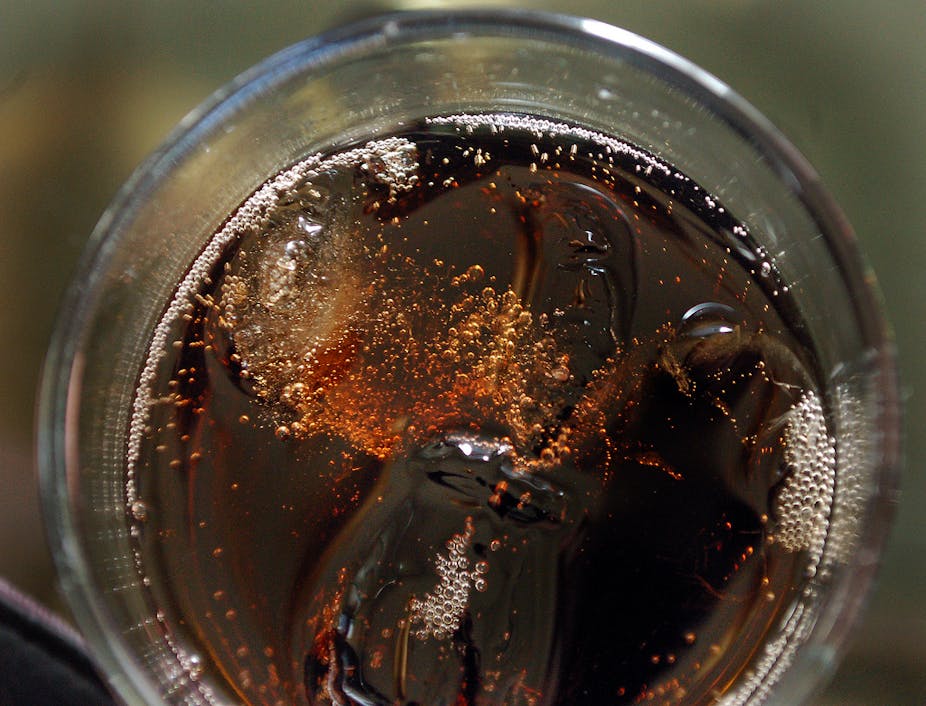A US judge has prevented the board of the New York department of health from implementing a regulation limiting the size of sugary drinks to 16 ounces (473ml). While this may be seen as a setback for obesity prevention, it’s also revealing of the types of challenges facing such measures.
Judge Milton A. Tingling’s judgement demonstrates how formal legal requirements can be used to undermine initiatives like this, making them vulnerable to challenge. It also highlights a number of problems with the rule.
The rule targeted a limited subset of sugary drinks. It left out “alcoholic beverages, lattes, milkshakes, frozen coffees, and a myriad of others too long to list … .” And, it excluded food-processing businesses and retail food stores. As 7-11s come under the jurisdiction of the department of agriculture, for instance, they would not have had to comply.
Indeed, even if the rule had come into force, it would have remained easy to purchase larger-sized drinks in New York.
Requirements of administrative law
The judge found the rule exceeded legislative authority in three ways. First, it was said to be based on economic and political factors unrelated to its stated purpose; by not including 7-11s, for example, health promotion was apparently being improperly weighed against political considerations.
What these political considerations might be are open to speculation as they were not explained. In addition, a statement of the financial costs of the obesity epidemic provided to the court by the board was interpreted as providing evidence that an balance was being improperly struck between public health and economic concerns.
Second, the judge found the rule was created without legislative authority. The New York City Charter specifies that the health department’s board may regulate the reporting and control of communicable and chronic diseases, and the supply of food and drugs.
But after reviewing the legislative history of the charter, the judge said the role of the board was “to protect the citizens of the city by providing regulations that prevent and protect against communicable, infectious, and pestilent diseases”. Only the city council, he said, has the authority to pass a law of this kind because it concerned chronic or non-communicable diseases.
Third, the board over-stepped its powers in choosing to regulate because the legislature (the city council) had already attempted and failed to make a law on the same subject. The council had previously rejected three resolutions, though not laws, on sugar-sweetened beverages.
As the rule applied to some but not all sugary drinks and food establishments, the judge found it lacked reason, that it was “arbitrary and capricious”. The judge noted:
[t]he Rule would not only violate the separation of powers doctrine, it would eviscerate it. Such an evisceration has the potential to be more troubling than sugar sweetened beverages.
Some, though by no means all, of this judgement is a triumph of legal formalism. The interpretation of the health board’s powers to regulate for public health promotion was exceedingly narrow. And the concern expressed about the board taking account of economic and political considerations was odd. In this country, we are obliged by law to take such matters into account when making laws.
Old tactics made new
There are other interesting aspects to the case. The petitioners in this case appear to have been chosen in order to avoid the perception that it was only the major corporates who were complaining. They comprised the New York Statewide Coalition of Hispanic Chambers of Commerce, the New York Korean-American Grocers Association, Soft Drink and Brewery Workers Union, Local 812, International Brotherhood of Teamsters, the National Restaurant Association, the National Association of Theatre Owners of New York and the American Beverage Association.
The New York Statewide Coalition of Hispanic Chambers of Commerce, for example, is a not-for-profit corporation representing 25 Hispanic and minority chambers of commerce.
The petitioners’ arguments on health took a leaf out of the tobacco industry’s book. They submitted “a compendium of scientific literature demonstrating that sugary drinks do not drive obesity or contribute significantly to chronic disease”.
The judge, who was clearly not persuaded by the board’s arguments, said:
The respondents in this action all state in some shape manner or form, “There is an obesity epidemic among New York residents which severely affects the public’s health” as a basis for the passage of 81.53 … The words “epidemic” and “obesity” are neither examined or explained as much as they are stated as fact.
There are different ways of looking at this attempt to regulate obesity prevention. It can be seen as a limited beginning that opens the way for other regulatory interventions and supported on this basis, or it can be seen as “an exercise in futility on practical and scientific grounds”, which is how Judge Tingling characterised it.
It is, perhaps, a bit of both. What’s most clear is that getting legislative action on obesity will require both political will and great legal skill. For anyone interested in devising regulatory responses to obesity, the judgement is well worth reading.

